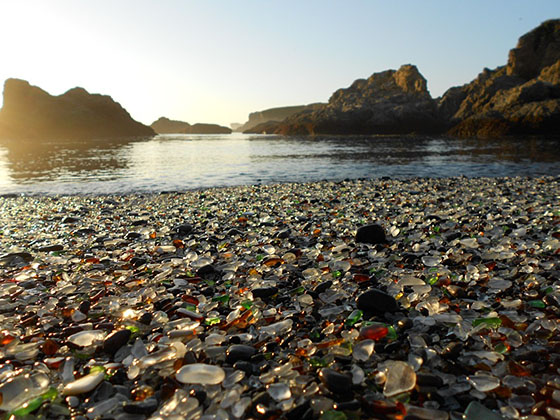
Glass Beach is a beach in MacKerricher State Park near Fort Bragg, California that is abundant in sea glass created from years of dumping garbage into an area of coastline near the northern part of the town.
When the original dump site filled in 1943, the site was moved to what is now known as “site two”, the active dump site from 1943 until 1949.
When this beach filled in 1949, the dump was moved north to what is now known as “Glass Beach”, which remained an active dump site until 1967.
The California State Water Resources Control Board and city leaders closed this area in 1967. Various cleanup programs were undertaken through the years to correct the damage. Over the next several decades, what was biodegradable in the dump sites simply degraded and all the metal and other items were eventually removed and sold as scrap or used in art. The pounding waves broke down the glass and pottery and tumbled those pieces into the small, smooth, colored pieces that often become jewelry quality and that cover Glass Beach and the other two glass beaches (former dump sites) in Fort Bragg.
The beach is now visited by tens of thousands of tourists yearly.About 1,000 to 1,200 tourists visit Fort Bragg’s glass beaches each day in the summer. Most collect some glass. Because of this and also because of natural factors (wave action is constantly grinding down the glass), the glass is slowly diminishing. There is currently a movement by Captain J. H. (Cass) Forrington[5] to replenish the beaches with discarded glass.[6] On December 10, 2012, the City Council of the City of Fort Bragg, discussed the beach glass depletion and declined to move forward with replenishment efforts due to the cost and perceived likelihood that required permits would not be approved.[7]
Similar beaches are found at Benicia, California and Hanapepe, Hawaii.
